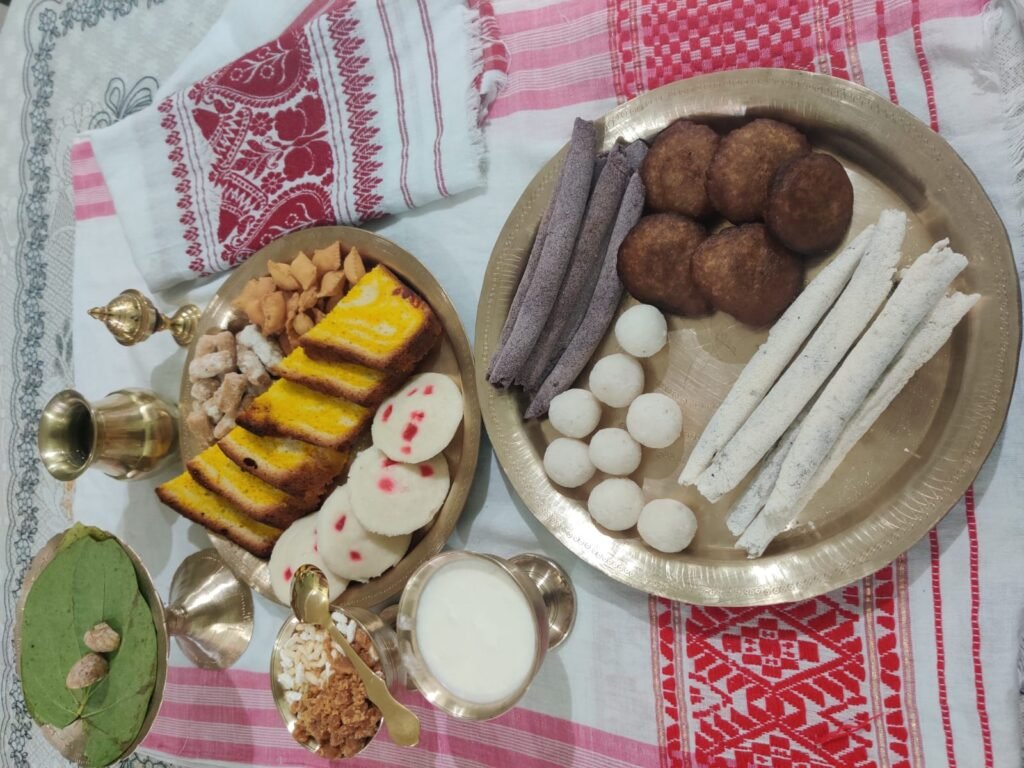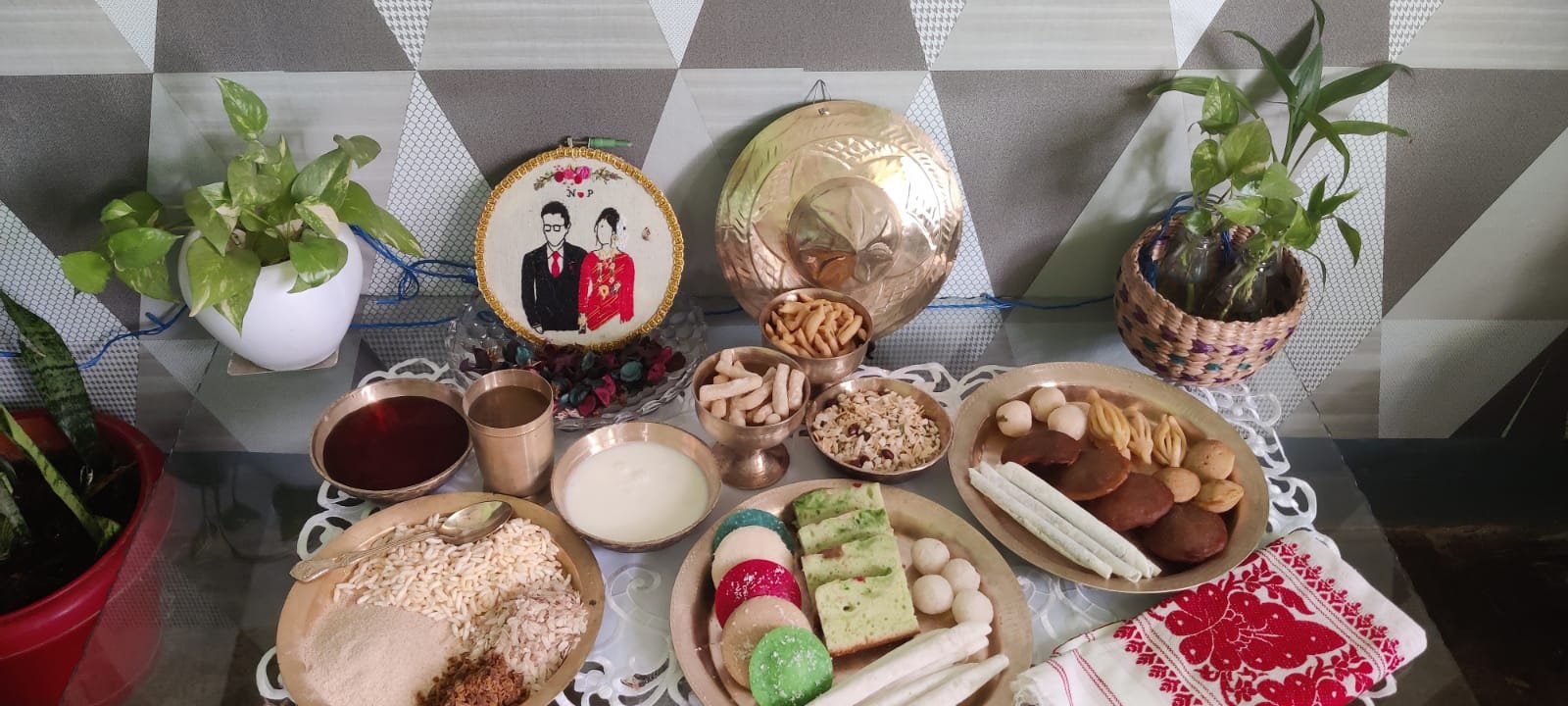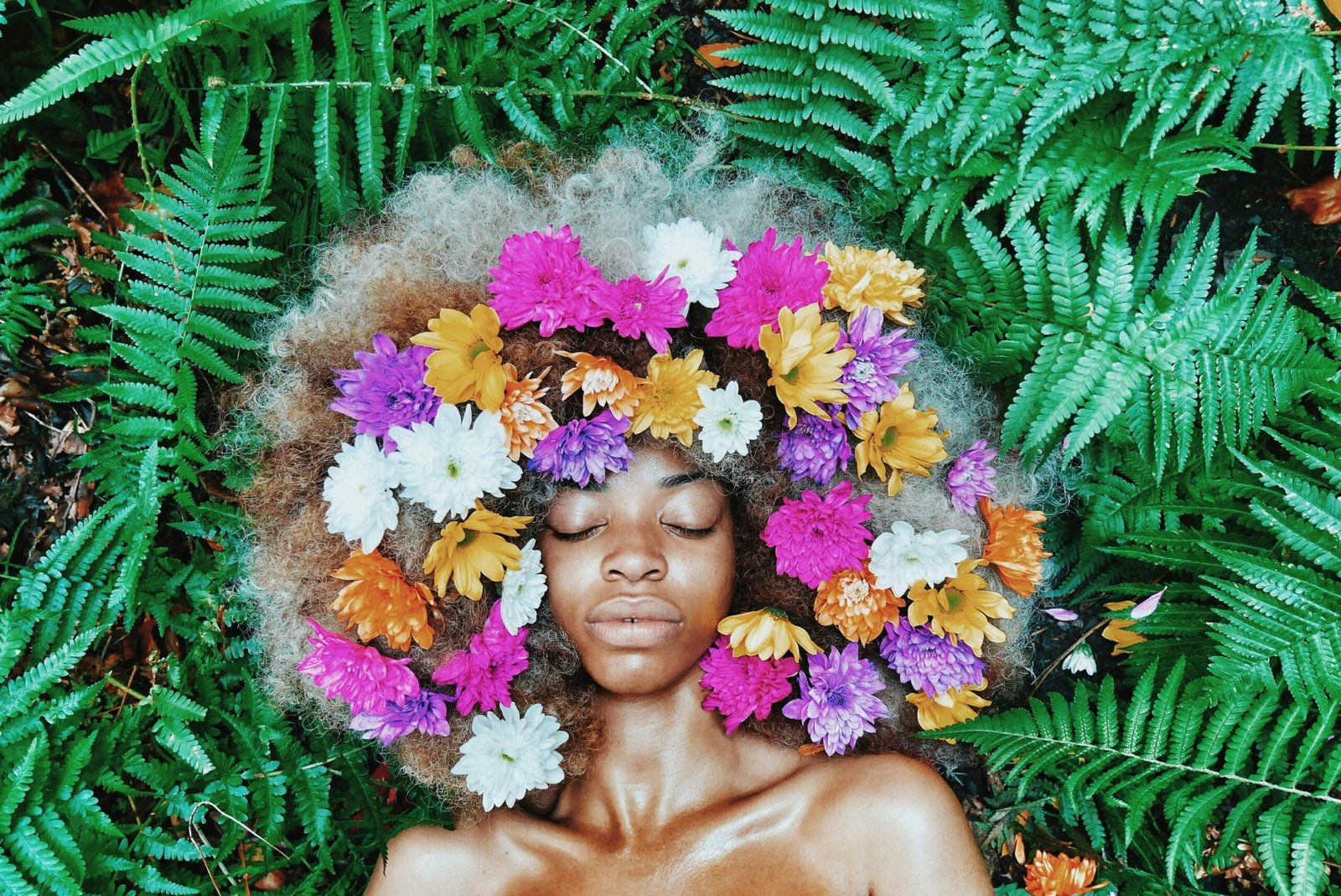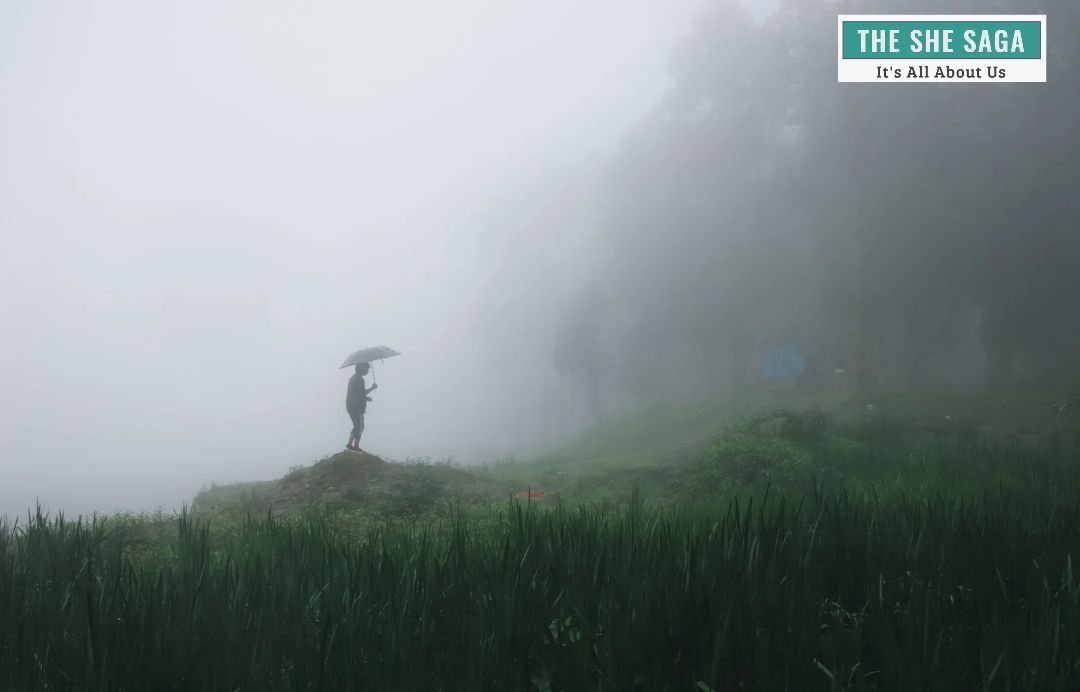Spring is here
It’s still dark, but a beam of yellow light lights up my room. Far away, I can hear the Kuli singing Coooo Coooo, and it mesmerizes the younger version of me. Yes, it heralds the onset of spring, the season of love, and a page in the calendar changes to welcome the Assamese New Year. The fragrance of Kopou Phool and Togor fills the environment. The beats of Dhool, Papa, and Gogona with Bihu Geets give a vibe of being Moi Axomiya.
Festival with ancient roots
Bohag Bihu or Rongali Bihu is a traditional ethnic festival celebrated in Assam by the indigenous ethnic groups of Assam. The festival is of mostly aboriginal origin, comprising Tibeto-Burman and Tai elements. It usually falls in the second week of April, historically signifying the time of harvest. Every year, it falls on the 14th day of April.

Preparations for the festival
With urbanisation and changing lifestyles, traditions have evolved, merged and modified. A week or maybe two weeks in advance starts the preparation to welcome spring. Folks working outside crave to be home-bound while the people back home wait eagerly for the grand reunion.
Women start on their taatxaal to weave Gamusa to gift their near and dear ones while sun-drying Saul is to be grounded in the traditional dheki or hand mortars and sieved properly to make Pithas. Men fetch coconuts, grind and pound them. Sesame seeds are ground and mixed with jaggery to go as fillings or to make laroo. Delicacies prepared on firewood are a different emotion altogether.
Rice flour is hand-rolled on a heated tawa/pan with sesame or coconut fillings to make pitha. Different techniques get shaped to make ghila pitha, anguli pitha, ketli pitha, tekeli pitha. Junburi, Kordoi, Khurma and Nimki adorn the platter. The sumptuous combination of flavours and textures calls for a delicious treat and the tedious process of making the pithas is worthwhile. Sira, Muri, Akhoi, Hando, Hurum with Doi serve as breakfast meals.

Uruka – A Day of Preparations
The day preceding celebrations is known as Uruka, a day of preparation and last-minute visits to the market. It is also a time to take out your Riha, Muga Mekhela and Dhoti -Punjabi from your wooden almirah.
Goru Bihu- Honoring the livestock
The next day is the Goru Bihu where the household worships the livestock getting ready to bathe them in herds in ponds or rivers. The cattle are washed with a combination of symbolic herbs: maah-halodhi (black gram and turmeric paste), whipped dighloti, makhioti tonglati.
Bamboo sticks stalked with pieces of lau (bottle gourd), bengena (brinjal), tita karela ( bitter gourd), thekera are prepared and then thrown on the cows while people sing the passage: “Dighloti dighal paat, maakhi marru jaat jaat; lau khaa bengena khaa, bosore bosore bardhi jaa, maare xaru baapere xoru toi hobi bor bor goru”. This is roughly translated as: “With our herbs and the leaves of dighloti, we drive away the flies which disturb you; we hope you accept our offering of brinjals and gourds, and continue to grow every year; and may you outgrow your parents”.
After washing the cattle, the remaining branches of dighloti-makhioti and lau-bengena chat etc. are hung on the roof of the cattle ranch signifying their participation.
By evening, women collect exho ebidh haak (101 types of vegetables), to make a bhaji for dinner. Variations of activities which may include specifics like gathering amlori tup (larvae of weaver ant), binding betel leaf plants, planting some bamboo roots, and many other symbolic harvest-related ritual materials are done.
At dusk, the cattle are paraded back to their guhali. The cattle are tied with new harnesses and are fed pithas made of rice. The day’s end is marked by burning dighloti and makhiyoti to create smoke to ward off insects.

Manuh Bihu – A day to honour ancestors
The first day of the Bohag month marks Manuh Bihu (‘Manuh symbolises ‘Elders’ and Ancestral Spirits). People take a special maah halodhi bath, put on new clothes and light saki at Gohai Ghor (the household prayer place). ‘Manuh Bihu’ involves the tradition of seeking blessings from the elders in a family and presenting the ceremonial patch of Bihuwan or the Gamusa as a gift, to be worn as a symbol of cultural pride.
Gamusa- The Assamese symbol of respect
A ‘Gamusa’ is an indispensable part of indigenous Assamese life and culture with its distinctive symbolic significance. The intricacy of its handcrafting symbolically historically heralded the ideas of friendship, love, respect, warmth, and hospitality and it is intimately woven into the social fabric of Assam.
People make social visits, and young boys and girls perform Husori or Jeng Bihu. Nasonis dance to the beats of dhol, pepa and toka and play gogona.

The streets carry a vibe of Bihu naams. While modernisation has modified a lot of our culture the flavour of carrying forth the traditions is always welcoming and what better than mingling in festivities? If not making a Pitha, serving or tasting a Pitha does wonders too and no doubt the innumerable reels on your feed are a testimony to connecting to our roots no matter how and where.

















Facebook Comments